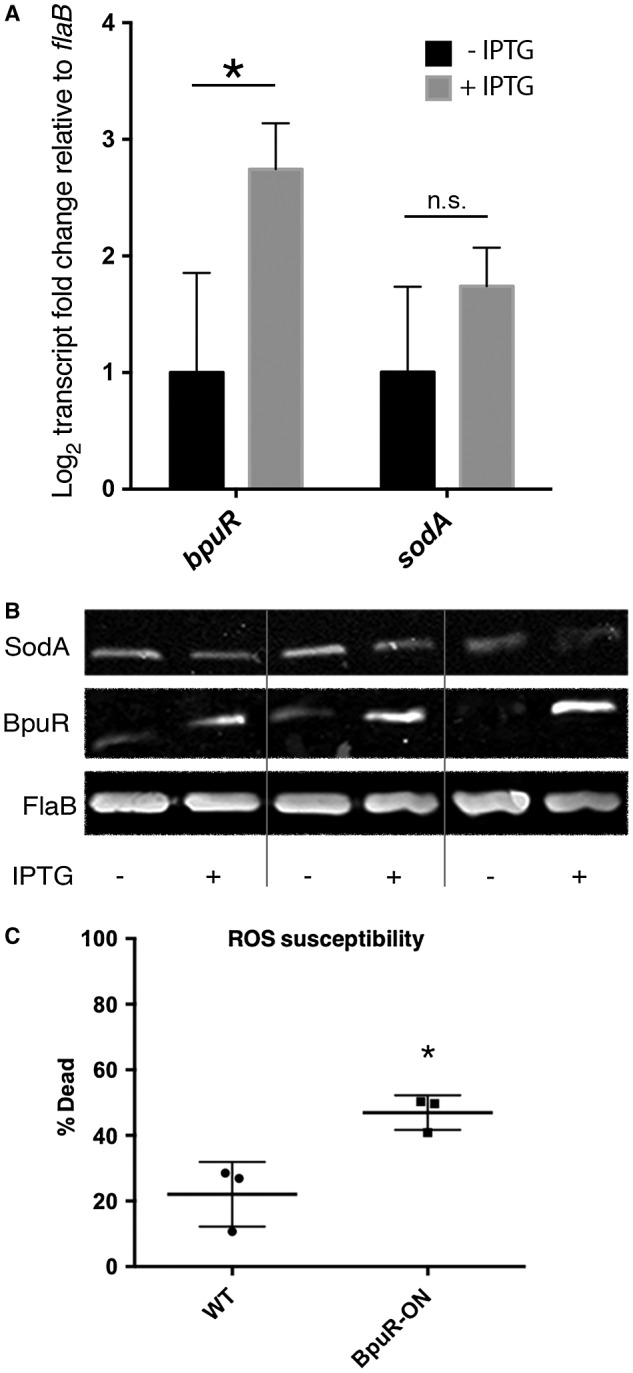Figure 5.

Increased levels of BpuR reduce SodA protein content, but do not affect sodA mRNA levels. Cultures of B. burgdorferi that contain an inducible bpuR construct were grown with or without IPTG inducer. A. qRT‐PCR analyses of bpuR and sodA transcripts in uninduced and induced cultures (−IPTG and +IPTG, respectively), relative to the flaB transcript. Addition of IPTG yielded significant increases in bpuR transcripts (*, P = 0.033), but did not have significant effects on sodA levels (N.S, P = 0.187), by t‐test of ∆Ct values. B. Immunoblot analyses of SodA, BpuR and FlaB proteins in three paired uninduced and induced cultures (− and +, respectively). Densiometric analyses of these images showed that BpuR signals changed +2.6, +3.1 and +4.3, and SodA signals changed −1.4, −1.4 and −1.9, for cultures 1, 2 and 3, respectively. C. B. burgdorferi carrying an inducible bpuR construct were incubated without or with IPTG, then incubated with methyl viologen (paraquat). Alive and dead bacteria were then identified by LIVE/DEAD staining and flow cytometry. BpuR‐induced bacteria were significantly more susceptible to reactive oxygen than were the uninduced bacteria (*, analyzed by unpaired t‐test, P = 0.0296).
